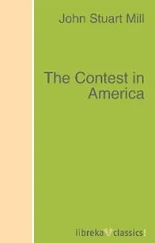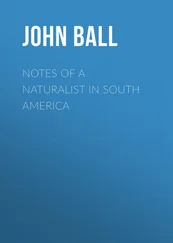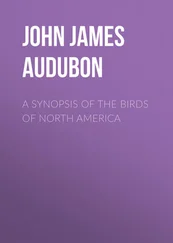The escape began at about ten to nine on the evening of Saturday, 12 September 1970. Tim put on his dark blue prison jacket and placed all his letters and treasured possessions in the pocket. He put on the blackened sneakers, left his farewell note in his locker and stepped out of his cell into the hallway.
Directly in front of him, at the end of the facing corridor, was the door to an internal prison yard. This was a square of grass enclosed on all sides by four cellblock corridors. It was also where a single tree grew, which seemed close enough to the corridor to enable getting onto the roof by climbing the tree and jumping across from its highest branches.
As he walked towards the door, a couple of convicts stood in the corridor and watched him pass. Tim had no choice but to walk past the prison yard door and round into another corridor, before turning back on himself and making another pass. The two cons were still watching. He walked past them again and headed into another cellblock. He was starting to act suspiciously now, he knew, but he had no option but to keep moving. He walked past them once again, and this time, once he had doubled back, they had gone.
He strode up to the door. As he was about to open it, he glanced into the adjacent cellblock where three more inmates were talking. One of them, a known snitch named Metcalf, 4 looked up and glanced at him at the very moment he was about to reach for the door handle. Tim stopped himself and Metcalf seemed suspicious. Tim walked past and, after doubling back once more, found that when he reached the door again all three of the inmates were looking at him. There was no way that he was going to be able to get through that door unnoticed. He walked on.
There was another entrance to the yard, on the opposite side, but it was risky. He would have to walk across the floodlit square to reach the tree, and no one ever went in the yard after dark, not even the guards. But what choice did he have? He walked through this second door, into the light, and strode quickly and quietly across the yard, praying that no one glanced out of the windows of any of the four surrounding corridors. When he reached the tree he discovered that it was directly in front of the window facing Metcalf. There was no way he could climb up without being spotted. He ducked down and sat on the steps by the door, feeling very exposed, listening to the talk of the convicts a few feet away What was he to do? He knew that he couldn’t stay where he was for long. He would have to climb the tree and make a break for it. It would take Metcalf a few minutes to raise the alarm, so while climbing the tree offered only a small hope of success it was the only option that he had at that moment. He stood up, grabbed a branch and pulled himself up.
With impeccable timing, as Tim’s body appeared in front of the window, he saw Metcalf turn and face away from him. Tim shot up the tree and, within seconds, he had dropped down onto the slanted tiled roof of the cellblock. From here he could look down and see the guards lounging in the custody office. He removed his sneakers and padded barefoot along the corridor roof and across the cellblock, trying not to run into the television aerials that were nearly invisible in the dark. He could see into the neighbouring cellblocks and knew that their lights must be illuminating him up against the dark sky, but he was too elated to care. He reached the end of the cellblock and found his final obstacle: a telephone wire.
California Men’s Colony West was originally an old army base on the central Californian coast, just north of San Luis Obispo. It had been converted into a prison 16 years earlier, and consisted of rows of two-storey wooden barracks that had been connected by roofed-in walkways. It was, and is, considered a model prison, geared towards community work and rehabilitation, and at the time it did not suffer from the chronic overpopulation that has come to characterise the Californian prison system. There were flower beds and lawns, and uninterrupted views to the hills of the Pacific coast. There were no gun towers or walls, but gun trucks guarded the corners of the compound. Anyone attempting to climb the fence could be shot before they reached the top.
The jail offered regular, unmonitored contact visits, and Tim could spend hours with Rosemary every weekend. They could walk together through the gardens. This allowed Rosemary to pass LSD to her husband. It also allowed them to plan an escape.
Rosemary had organised a team of people who were prepared to get Tim out of America. There had been many obstacles to overcome. Once out of the prison, they would have to avoid the roadblocks that would appear across central California as soon as his absence was noticed. Tim would need to be moved to a safe house, and there were the matters of disguises and fake paperwork, and of finding a way to leave the country unnoticed. There was also the matter of the finance needed to fund the entire operation. It was not a simple task, but Rosemary was intelligent and determined, and Tim had legions of supporters who were more than willing to help. Assistance like this was a luxury that Tim did not have in his part of the operation. It was his job to find a way to get himself outside the jail without being shot.
Many options were considered while Rosemary made arrangements and the months passed. Tim studied the movement and timings of the guards and the gun trucks. He discreetly made enquiries amongst the few cons he felt he could trust. The simplest idea was to wait until the winter, when the thick sea fogs rolled in. Then he could simply climb the fence at the back of the compound under cover of the fog, and pray that he could slip unnoticed past the guards who patrolled the open land. But real, thick fogs were unpredictable, making it difficult to synchronise the escape with Rosemary’s preparations. It would also mean waiting until the middle of winter, which he had no intention of doing. Besides, he thought he had found another way: an escape route that could just work. There was a telephone wire that ran for 40 feet from the roof of the cellblock, across an internal road, and ended at a telephone pole that was on the far side of the fence. For weeks he studied it out of the corner of his gaze, wary of being caught looking too intently at any part of his route. He found that the best way to study it was during the yoga practice he performed daily in the yard, stretching his body into positions in which his half-closed eyes could look beyond the fence into the freedom beyond. He began playing handball in order to improve his physical fitness. And he waited for the signal from outside.
Tim crouched at the edge of the cellblock roof, looking down at the 20-foot drop below the cable. The height was crucial to his plans, as the cable was higher than the floodlights. This meant that on a reasonably foggy night he could pull himself across without being spotted by the guards or snipers watching the fence. But it also meant that it would take a lot of courage to launch himself away from the security of the roof, with nothing but faith and a thin wire between him and the ground below. He had been able to study this cable out of the window while sitting on the toilet, and felt sure that it could hold his weight. He would now put that belief to the test.
He put his sneakers and handball gloves on. Lying down on the edge of the roof with his head hanging over the drop, he clutched the wire in both hands and hooked his legs over it. Was it foggy enough? It was not a perfectly clear night, but there was more visibility than he would have liked. But there was nothing he could do about that, and from the moment he stepped out of his cellblock, turning back had not been an option. It was now time to risk everything. A fall could kill him, and if he was seen from this point on he would be shot on the spot. He tensed both hands and pulled himself away from the roof and out into the void beyond.
Читать дальше












